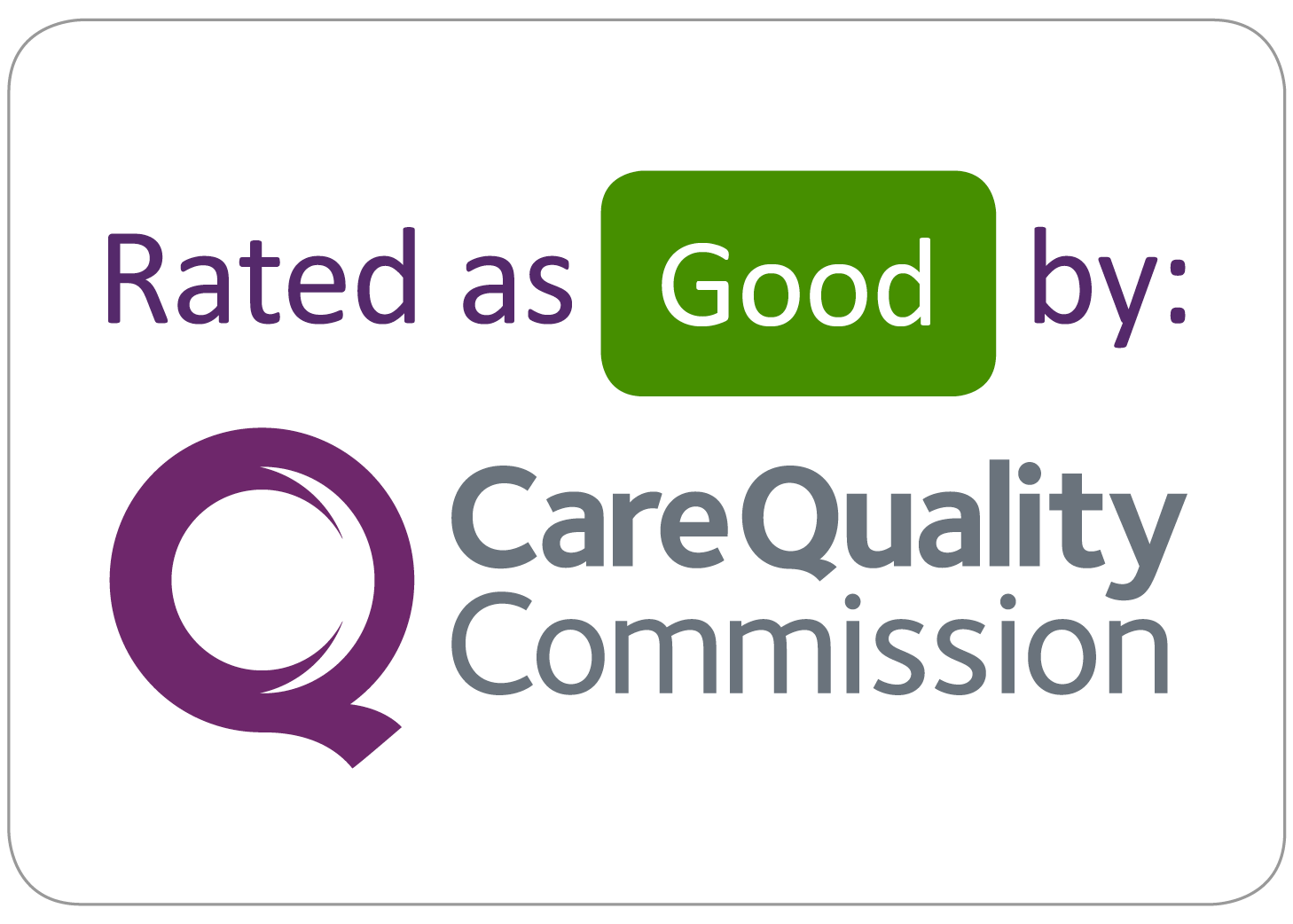Gender Pay Gap Reporting
It became mandatory on 31 March 2017 for public sector organisations with more than 250 employees to report annually on their gender pay gap. We are registered with the Government Equalities Office enabling us to submit data on to the website.
The gender pay gap shows the difference between the average (mean or median) earnings of men and women. This is expressed as a percentage of men’s earnings.
The gender pay gap differs from equal pay. Equal pay deals with the pay differences between men and women who carry out the same jobs, similar jobs or work of equal value. It is unlawful to pay people unequally because they are a man or a woman.
The Equality and Human Rights Commission (EHRC) is responsible for monitoring how public bodies are complying with the gender pay gap reporting requirements and can take enforcement action.
2022-2023
Gender Pay Gap Reporting - Online Submission
| Difference between Men and Women | Mean | Median |
| (Average) | (Middle) | |
| Gender Pay Gap | 28.90% | 19.20% |
| Gender Bonus Pay | 41.00% | 0.00% |
| Proportion of staff receiving a bonus | Female | Male |
| Received a bonus | 2.80% | 13.10% |
| No bonus received | 97.20% | 86.90% |
| Pay Quartiles | Female | Male |
| Upper Quartile | 67.20% | 32.80% |
| Upper Middle Quartile | 84.50% | 15.50% |
| Lower Middle Quartile | 86.50% | 13.50% |
| Lower Quartile | 85.70% | 14.30% |
| The above table outlines the gender pay gap data for the Trust (as at 31 March 2022), which was published on the government’s online reporting service in March 2023. Data provided within this report was obtained through the standard national Gender Pay Gap dashboards via the Electronic Staff Record (ESR) Business Intelligence reporting suite, plus local records regarding CEA and Long Service bonus payments. | ||
Gender Pay Gap Reporting - By Staff Group and Gender
| Staff Group | Female (% headcount) | Male (% headcount) | ||||||||||
| Add Prof Scientific and Technic | 143 (76.9%) | 43 (23.1%) | ||||||||||
| Additional Clinical Services | 1248 (89.8%) | 142 (10.2%) | ||||||||||
| Administrative and Clerical | 914 (75.2%) | 301 (24.8%) | ||||||||||
| Allied Health Professionals | 434 (82.2%) | 94 (17.8%) | ||||||||||
| Estates and Ancillary | 62 (86.1%) | 10 (13.9%) | ||||||||||
| Healthcare Scientists | 104 (73.2%) | 38 (26.8%) | ||||||||||
| Medical and Dental | 306 (44.5%) | 381 (55.5%) | ||||||||||
| Nursing and Midwifery Registered | 1813 (93.2%) | 133 (6.8%) | ||||||||||
| Grand Total | 5024 (81.5%) | 1142 (18.5%) | ||||||||||
| As at 31 March 2022, 81.5% of the Trust’s workforce was female and 18.5% of the Trust’s workforce was male. | ||||||||||||
| Staff Group | Mean (Average) | Median (Middle) | ||||||||||
| Add Prof Scientific and Technic | 3.71% | 1.24% | ||||||||||
| Additional Clinical Services | 1.19% | -1.08% | ||||||||||
| Administrative and Clerical | 19.50% | 11.63% | ||||||||||
| Allied Health Professionals | -5.97% | -9.28% | ||||||||||
| Estates and Ancillary | -5.25% | -0.05% | ||||||||||
| Healthcare Scientists | 5.10% | 2.43% | ||||||||||
| Medical and Dental | 13.01% | 16.50% | ||||||||||
| Nursing and Midwifery Registered | 1.90% | -0.15% | ||||||||||
| All Staff Groups - Excluding M&D | 5.70% | 2.67% | ||||||||||
| All Staff Groups | 28.90% | 19.20% | ||||||||||
In summary, the gender pay gap (difference in hourly rate of) as a mean is 28.9%, and a median of 19.2%. The difference in bonus pay, calculated from the mean is 41% and median of 0%. | ||||||||||||
| If the medical and dental staff group is excluded from the data, then the overall mean gender pay gap is 5.7% and the median is 2.7%. | ||||||||||||
Gender Pay Gap Reporting - Full Workforce Analysis
Next Steps after Publication
To be added soon.
2021-2022
Gender Pay Gap Reporting - Online Submission
| Difference between Men and Women | Mean | Median |
| (Average) | (Middle) | |
| Gender Pay Gap | 28.90% | 19.20% |
| Gender Bonus Pay | 41.00% | 0.00% |
| Proportion of staff receiving a bonus | Female | Male |
| Received a bonus | 2.80% | 13.10% |
| No bonus received | 97.20% | 86.90% |
| Pay Quartiles | Female | Male |
| Upper Quartile | 67.20% | 32.80% |
| Upper Middle Quartile | 84.50% | 15.50% |
| Lower Middle Quartile | 86.50% | 13.50% |
| Lower Quartile | 85.70% | 14.30% |
| The above table outlines the gender pay gap data for the Trust (as at 31 March 2022), which was published on the government’s online reporting service in March 2023. Data provided within this report was obtained through the standard national Gender Pay Gap dashboards via the Electronic Staff Record (ESR) Business Intelligence reporting suite, plus local records regarding CEA and Long Service bonus payments. | ||
Gender Pay Gap Reporting - By Staff Group and Gender
| Staff Group | Female (% headcount) | Male (% headcount) | ||||||||||
| Add Prof Scientific and Technic | 143 (76.9%) | 43 (23.1%) | ||||||||||
| Additional Clinical Services | 1248 (89.8%) | 142 (10.2%) | ||||||||||
| Administrative and Clerical | 914 (75.2%) | 301 (24.8%) | ||||||||||
| Allied Health Professionals | 434 (82.2%) | 94 (17.8%) | ||||||||||
| Estates and Ancillary | 62 (86.1%) | 10 (13.9%) | ||||||||||
| Healthcare Scientists | 104 (73.2%) | 38 (26.8%) | ||||||||||
| Medical and Dental | 306 (44.5%) | 381 (55.5%) | ||||||||||
| Nursing and Midwifery Registered | 1813 (93.2%) | 133 (6.8%) | ||||||||||
| Grand Total | 5024 (81.5%) | 1142 (18.5%) | ||||||||||
| As at 31 March 2022, 81.5% of the Trust’s workforce was female and 18.5% of the Trust’s workforce was male. | ||||||||||||
| Staff Group | Mean (Average) | Median (Middle) | ||||||||||
| Add Prof Scientific and Technic | 3.71% | 1.24% | ||||||||||
| Additional Clinical Services | 1.19% | -1.08% | ||||||||||
| Administrative and Clerical | 19.50% | 11.63% | ||||||||||
| Allied Health Professionals | -5.97% | -9.28% | ||||||||||
| Estates and Ancillary | -5.25% | -0.05% | ||||||||||
| Healthcare Scientists | 5.10% | 2.43% | ||||||||||
| Medical and Dental | 13.01% | 16.50% | ||||||||||
| Nursing and Midwifery Registered | 1.90% | -0.15% | ||||||||||
| All Staff Groups - Excluding M&D | 5.70% | 2.67% | ||||||||||
| All Staff Groups | 28.90% | 19.20% | ||||||||||
In summary, the gender pay gap (difference in hourly rate of) as a mean is 28.9%, and a median of 19.2%. The difference in bonus pay, calculated from the mean is 41% and median of 0%. | ||||||||||||
| If the medical and dental staff group is excluded from the data, then the overall mean gender pay gap is 5.7% and the median is 2.7%. | ||||||||||||
Gender Pay Gap Reporting - Full Workforce Analysis
Next Steps after Publication
Work to close the gender pay gap will form part of our approach to equality, diversity and inclusion, which is an identified theme in our people strategy.
The Inclusion & OD Manager role will lead on this agenda and is launching the following activities:
- Women’s Voices Forum
- Empower Programme
- Leadership Development Platform
- Lived Experiences Series
- Inclusive Recruitment
- Equality Impact Assessment
- Reverse Mentoring
Engagement with colleagues across the Trust will be a key element of the action plan.
An Executive Director and Non-Executive Director will be identified to oversee the Gender Pay Gap agenda.
2020-2021
Gender Pay Gap Reporting - Online Submission
| Difference between Men and Women | Mean | Median |
| (Average) | (Middle) | |
| Gender Pay Gap | 30.9% | 20.1% |
| Gender Bonus Pay | 49.6% | 96.7% |
| Proportion of staff receiving a bonus | Female | Male |
| Received a bonus | 1.9% | 8.7% |
| No bonus received | 98.1% | 91.3% |
| Pay Quartiles | Female | Male |
| Upper Quartile | 68.1% | 31.9% |
| Upper Middle Quartile | 87.8% | 12.2% |
| Lower Middle Quartile | 86.5% | 13.5% |
| Lower Quartile | 86.3% | 13.7% |
| The above table outlines the gender pay gap data for the Trust (as at 31 March 2020), which was published on the government’s online reporting service on 11 May 2021. All data provided within this report was obtained through the standard national Gender Pay Gap dashboards via the Electronic Staff Record (ESR) Business Intelligence reporting suite. | ||
Gender Pay Gap Reporting - By Staff Group and Gender
Staff Group | Female % (headcount) | Male % (headcount) |
Professional Scientific & Technical | 178 (74.8%) | 60 (25.2%) |
Additional Clinical Services | 1122 (90.1%) | 123 (9.9%) |
Administrative and Clerical | 879 (77.9%) | 249 (22.1%) |
Allied Health Professionals | 389 (84.2%) | 73 (15.8%) |
Estates and Ancillary | 54 (91.5%) | 5 (8.5%) |
Healthcare Scientists | 90 (73.2%) | 33 (26.8%) |
Medical and Dental | 267 (43.3%) | 350 (56.7%) |
Nursing and Midwifery Registered | 1735 (94.1%) | 109 (5.9%) |
Total | 4714 (82.5%) | 1002 (17.5%) |
As at 31 March 2020, 82.5% of the Trust’s workforce was female and 17.5% of the Trust’s workforce was male.
Staff Group | Mean (Average) | Median (Middle) |
Professional Science & Technical | 8.6% | 12.0% |
Additional Clinical Services | -1.5% | -2.7% |
Administrative and Clerical | 19.0% | 11.9% |
Allied Health Professionals | -6.7% | -14.0% |
Estates and Ancillary | 9.9% | 8.7% |
Healthcare Scientists | 8.8% | 1.3% |
Medical and Dental | 16.0% | 23.7% |
Nursing and Midwifery Registered | 0.3% | 3.7% |
| ||
All Staff Groups - Excluding M&D | 5.3% | -0.4% |
| ||
All Staff Groups | 30.9% | 20.1% |
In summary, the gender pay gap (difference in hourly rate of) as a mean is 30.9%, and a median of 20.1%. The difference in bonus pay, calculated from the mean is 49.6% and median of 96.7%.
If the medical and dental staff group is excluded from the data, then the overall mean gender pay gap is 5.3% and the median is -0.4% (in favour of women).
Gender Pay Gap Reporting - Full Workforce Analysis
Next Steps after Publication
Work to close the gender pay gap will form part of our approach to equality, diversity and inclusion, which is an identified theme in our people strategy and will be included in The Cupboard.
The Inclusion & OD Manager role will lead on this agenda and is launching the following activities:
- Women’s Voices Forum
- Empower Programme
- Leadership Development Platform
- Lived Experiences Series
- Inclusive Recruitment
- Equality Impact Assessment
- Reverse Mentoring
Engagement with colleagues across the Trust will be a key element of the action plan.
An Executive Director and Non-Executive Director will be identified to oversee the Gender Pay Gap agenda.
2019-2020
Gender Pay Gap Reporting - Online Submission
| Difference between Men and Women | Mean | Median |
| (Average) | (Middle) | |
| Gender Pay Gap | 31.7% | 18.7% |
| Gender Bonus Pay | 57.1% | 96.7% |
| Proportion of staff receiving a bonus | Female | Male |
| Received a bonus | 1.7% | 7.1% |
| No bonus received | 98.3% | 92.9% |
| Pay Quartiles | Female | Male |
| Upper Quartile | 68.2% | 31.8% |
| Upper Middle Quartile | 87.8% | 12.2% |
| Lower Middle Quartile | 85.1% | 14.9% |
| Lower Quartile | 87.0% | 13.0% |
| The above table outlines the gender pay gap data for the Trust (as at 31 March 2019). All data provided within this report was obtained through the standard national Gender Pay Gap dashboards via the Electronic Staff Record (ESR) Business Intelligence reporting suite. | ||
Gender Pay Gap Reporting - By Staff Group and Gender
Note - No Staff Group/Gender breakdown was completed for this year.
Gender Pay Gap Reporting - Full Workforce Analysis
Next Steps after Publication
“Work to close the gender pay gap will form part of our approach to equality, diversity and inclusion which is an identified theme in our people strategy.
The Equality, Diversity and Inclusion Manager will lead on taking forward actions and consider further activity to reduce the gender pay gap further within the Trust taking into account data the data ending 31 March 2019”
2018-2019
Gender Pay Gap Reporting - Online Submission
Difference between Men and Women | Mean | Median |
Gender Pay Gap | 26.3% | 8.4% |
Gender Bonus Pay | 60.4% | 97.5% |
Proportion of staff receiving a bonus | Female | Male |
Received a bonus | 1.5% | 6.3% |
No bonus received | 98.5% | 93.7% |
Pay Quartiles | Female | Male |
Upper Quartile | 70.6% | 29.4% |
Upper Middle Quartile | 87.9% | 12.1% |
Lower Middle Quartile | 84.2% | 15.8% |
Lower Quartile | 83.1% | 16.9% |
The above table outlines the gender pay gap data for the Trust (as at 31 March 2018), which was published on the government’s online reporting service on 21 March 2019. All data provided within this report was obtained through the standard national Gender Pay Gap dashboards via the Electronic Staff Record (ESR) Business Intelligence reporting suite.
Gender Pay Gap Reporting - By Staff Group and Gender
Staff Group | Female % | Male % |
Professional Scientific & Technical | 76.0% (158) | 24.0% (50) |
Additional Clinical Services | 90.3% (1119) | 9.7% (120) |
Administrative and Clerical | 77.8% (965) | 22.2% (276) |
Allied Health Professionals | 84.9% (366) | 15.1% (65) |
Estates and Ancillary | 64.1% (243) | 35.9% (136) |
Healthcare Scientists | 73.8% (90) | 26.2% (32) |
Medical and Dental | 41.5% (228) | 58.5% (322) |
Nursing and Midwifery Registered | 94.1% (1747) | 5.9% (109) |
Total | 81.6% (4917) | 18.4% (1109) |
As at 31 March 2018, 81.6% of the Trust’s workforce was female and 18.4% of the Trust’s workforce was male.
Staff Group | Mean | Median |
Professional Science & Technical | 12.2% | 14.5% |
Additional Clinical Services | -2.4% | -1.5% |
Administrative and Clerical | 17.8% | 12.2% |
Allied Health Professionals | -9.2% | -11.6% |
Estates and Ancillary | 1.2% | 4.8% |
Healthcare Scientists | -8.1% | -5.5% |
Medical and Dental | 13.6% | 23.6% |
Nursing and Midwifery Registered | 5.6% | 3.6% |
All Staff Groups - Excluding M&D | 0.8% | -10.3% |
All Staff Groups | 26.3% | 8.4% |
In summary, the gender pay gap (difference in hourly rate of) as a mean is 26.3%, and a median of 8.4%. The difference
in bonus pay, calculated from the mean is 60.4% and median of 97.5%.
If the medical and dental staff group is excluded from the data, then the overall mean gender pay gap is 0.8% and the
median is -10.3% (in favour of women).
Gender Pay Gap Reporting - Full Workforce Analysis
Next Steps after Publication
Work to close the gender pay gap will form part of the Trust’s approach to equality, diversity and inclusion which is an identified theme in our people strategy. Actions agreed to reduce the gender pay gap within the Trust will take into account data for the period ending 31 March 2019.
2017-2018
Following government consultation, it became mandatory on 31 March 2017 for public sector organisations with over 250 employees to report annually on their gender pay gap (GPG).
Since the Equality Act 2010 (Specific Duties) Regulations 2011 (SDR) came into force on 10 September 2011, there has been a duty for public bodies with 150 or more employees to publish information on the diversity of their workforce. Although the SDR did not require mandatory GPG reporting, the Government Equalities Office (GEO) and the Equality and Human Rights Commission (EHRC) provided guidance that made it clear that employers should consider including GPG information in the data they already publish. It was evident that not all employers did this, so the government made GPG reporting mandatory by amending the SDR so that all public sector employers with more than 250 employees have to measure and publish their gender pay gaps.
This is the first year the Trust has published the gender pay gap data. For the first year, this will be the pay period including 31 March 2017.
The gender pay gap shows the difference between the average (mean or median) earnings of men and women. This is expressed as a percentage of men’s earnings eg. women earn 26.6% less than men.
The gender pay gap differs from equal pay. Equal pay deals with the pay differences between men and women who carry out the same jobs, similar jobs or work of equal value. It is unlawful to pay people unequally because they are a man or a woman.
Gender Pay Gap Reporting - Online Submission
Difference between Men and Women | Mean | Median |
Gender Pay Gap | 26.6% | 7.8% |
Gender Bonus Pay | 18.4% | 0.0% |
Proportion of staff receiving a bonus | Female | Male |
Received a bonus | 0.6% | 6.1% |
No bonus received | 99.4% | 93.9% |
Pay Quartiles | Female | Male |
Upper Quartile | 71.7% | 28.3% |
Upper Middle Quartile | 87.2% | 12.8% |
Lower Middle Quartile | 84.5% | 15.5% |
Lower Quartile | 81.9% | 18.1% |
The above table outlines the gender pay gap data for the Trust (as at 31 March 2017), which was submitted on the government’s online reporting service on 8 March 2018. All data provided within this report was obtained through the standard national Gender Pay Gap dashboards via the Electronic Staff Record (ESR) Business Intelligence reporting suite.
Gender Pay Gap Reporting - By Staff Group and Gender
Staff Group | Female % | Male % |
Professional Scientific & Technical | 71.8% (148) | 28.2% (58) |
Additional Clinical Services | 88.7% (1316) | 11.3% (167) |
Administrative and Clerical | 76.0% (916) | 24.0% (289) |
Allied Health Professionals | 87.8% (373) | 12.2% (52) |
Estates and Ancillary | 48.5% (96) | 51.5% (102) |
Healthcare Scientists | 75.6% (90) | 24.4% (29) |
Medical and Dental | 42.5% (233) | 57.5% (315) |
Nursing and Midwifery Registered | 93.9% (1828) | 6.1% (119) |
Total | 81.6% (5000) | 18.4% (1131) |
As at 31 March 2017, 81.6% of the Trust’s workforce was female and 18.4% of the Trust’s workforce was male.
Staff Group | Mean | Median |
Professional Science & Technical | 14.1% | 15.4% |
Additional Clinical Services | -2.2% | -3.7% |
Administrative and Clerical | 15.9% | 10.8% |
Allied Health Professionals | -14.0% | -14.4% |
Estates and Ancillary | 6.6% | 6.6% |
Healthcare Scientists | -2.9% | 0.9% |
Medical and Dental | 16.1% | 28.1% |
Nursing and Midwifery Registered | 1.3% | 2.1% |
All Staff Groups - Excluding M&D | 0.0% | -10.7% |
All Staff Groups | 26.6% | 7.8% |
In summary, the gender pay gap (difference in hourly rate of) as a mean is 26.6%, and a median of 7.8%. The difference in bonus pay, calculated from the mean is 18.4% and median of 0.0%.
If the medical and dental staff group is excluded from the data, then the overall mean gender pay gap is 0% and the median is -10.7% (in favour of women).
Gender Pay Gap Reporting - Full Workforce Analysis
Next Steps after Publication
The Trust will consider the implications of the gender pay gap following the analysis and make recommendations to further reduce the gender pay gap. An action plan will be developed.

















